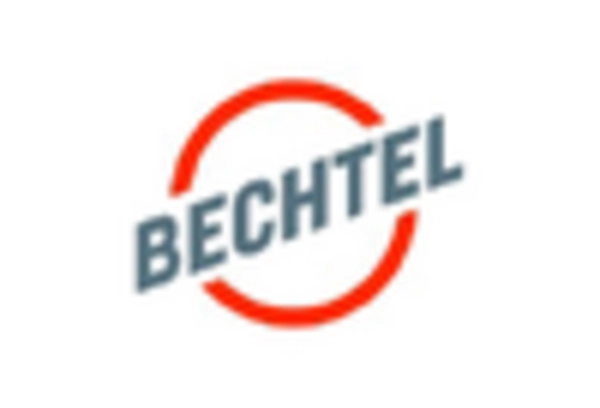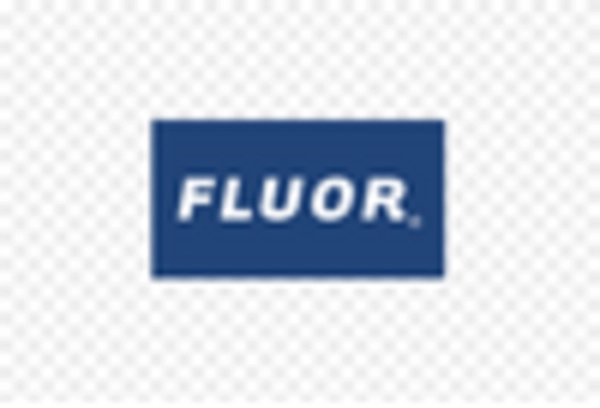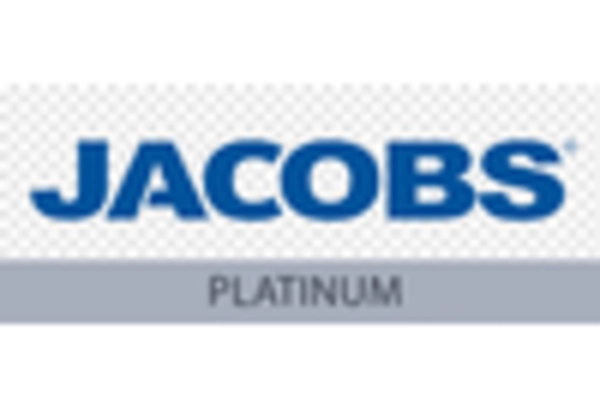Increased Urbanization
The rapid pace of urbanization is a primary driver of the Transportation Infrastructure Market. As populations in urban areas continue to swell, the demand for efficient transportation systems escalates. According to recent data, urban areas are expected to house approximately 68% of the world's population by 2050. This demographic shift necessitates the expansion and modernization of transportation networks, including roads, bridges, and public transit systems. Investments in these infrastructures are crucial to accommodate the growing number of commuters and to reduce congestion. Consequently, urban planners and policymakers are increasingly focusing on sustainable transportation solutions, which may lead to innovative designs and technologies in the Transportation Infrastructure Market.
Technological Advancements
Technological advancements play a pivotal role in shaping the Transportation Infrastructure Market. Innovations such as smart traffic management systems, autonomous vehicles, and advanced materials are transforming how transportation infrastructure is designed and maintained. For instance, the integration of Internet of Things (IoT) technology into transportation systems can enhance real-time data collection and analysis, leading to improved traffic flow and safety. Furthermore, the adoption of smart infrastructure solutions is projected to increase investment in the sector, with estimates suggesting that the smart transportation market could reach USD 200 billion by 2025. These advancements not only improve efficiency but also contribute to the overall sustainability of transportation systems, making them a key driver in the Transportation Infrastructure Market.
Government Investments and Policies
Government investments and policies are crucial drivers of the Transportation Infrastructure Market. Many governments are recognizing the need to upgrade aging infrastructure and are allocating substantial budgets for transportation projects. For example, recent reports indicate that infrastructure spending in various regions is expected to exceed USD 1 trillion annually by 2025. This financial commitment is often accompanied by policies aimed at enhancing public transportation, reducing emissions, and promoting sustainable practices. Additionally, government initiatives to foster public-private partnerships can further stimulate investment in transportation infrastructure, leading to innovative solutions and improved service delivery. As such, the role of government in shaping the Transportation Infrastructure Market cannot be overstated.
Rising Demand for Freight and Logistics
The rising demand for freight and logistics services is a significant driver of the Transportation Infrastructure Market. With the expansion of e-commerce and global trade, the need for efficient transportation networks to facilitate the movement of goods has intensified. Recent statistics indicate that the logistics market is expected to reach USD 12 trillion by 2027, underscoring the critical role of transportation infrastructure in supporting this growth. Investments in roadways, railways, and ports are essential to enhance the efficiency of supply chains and reduce delivery times. As such, the increasing demand for freight services is likely to spur further development and modernization of transportation infrastructure, making it a vital component of the Transportation Infrastructure Market.
Environmental Regulations and Sustainability Goals
Environmental regulations and sustainability goals are increasingly influencing the Transportation Infrastructure Market. As concerns about climate change and environmental degradation grow, governments and organizations are implementing stricter regulations aimed at reducing carbon emissions from transportation systems. This shift is prompting investments in greener technologies and infrastructure, such as electric vehicle charging stations and energy-efficient public transit systems. The market for sustainable transportation solutions is projected to grow significantly, with estimates suggesting a compound annual growth rate of over 10% in the coming years. Consequently, the push for sustainability is not only reshaping existing transportation infrastructure but also driving innovation and investment in the Transportation Infrastructure Market.


















Leave a Comment